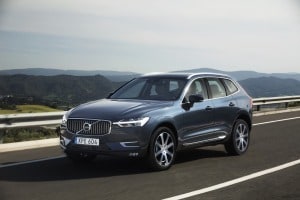Edmunds.com 2012 Auto Sales Forecast: 13.6 Million

With just days remaining in 2011, the sales picture for 2012 is becoming clearer. Edmunds.com forecasts 2012 new vehicle sales of 13.6 million, a moderate but solid increase over 2011 sales, which are likely to come in around 12.8 million. 2012 will be the third year of growth since auto sales bottomed out in 2009. Sales will rise due to the continued release of pent-up demand from buyers who have delayed new vehicle purchases since the recession, supplemented by the recovery of deferred sales from this past summer when buying conditions were less favorable post-earthquake. Several million such buyers likely exist, and with annual sales still far below pre-recession levels, there's plenty of indication that pent-up demand is far from spent. Improved selection, loosening credit conditions and growing consumer motivation to buy should drive sales and cause pent-up demand to further release in 2012. But the continued slow pace of the economic recovery and uncertainty in the months leading up to the U.S. Presidential election will constrain sales growth. Threats of a European recession and a Chinese slowdown also pose a risk to growth in the auto market. If these or other negative events shake the marketplace, new vehicle sales momentum could weaken.
The Year At A Glance
1. January-April: Sales By Mini-Bubble
The early months of 2012 should resemble the end of 2011 in terms of auto sales performance. Since September, sales have been boosted by the return of consumers who held off on purchases this summer due to supply shortages and higher prices following the production disruptions caused by the Japanese earthquake. Edmunds.com estimates that consumers deferred nearly 300,000 sales from May to August, and that only about 100,000 "lost" sales have been recovered to date. As a result, a sizable pool of buyers exists beyond base demand of 12.9 million units per year. Edmunds.com estimates that at least another 100,000 sales will return to market in the next few months, fueling the current auto sales "mini-bubble" through at least the first few months of 2012.
The sales pace should slow somewhat in January compared to end of 2011. December has been one of the strongest sales months in recent years and sales have fallen around 30 percent on average from December to January. This effect should appear again since December is showing particular strength this year, as deal-seeking buyers respond to improved selection and extensive automaker advertising about end-of-the-year sales events. January sales also may subside due to some lingering supply issues from the Thai floods, for Honda in particular. This effect will be limited, though, since Honda production for the U.S. market returned to 100 percent in the beginning of this month. After January, as supply growth resumes, the sales pace should pick up. Sales are likely to show particular strength in March, one of the traditionally top sales months of the year, and after dipping in January and February to the low 13 millions, the seasonally adjusted annual rate (SAAR) of sales should move back toward the mid-13 millions by April. Year-over-year growth will likely be limited, though, since February, March and April 2011 were especially strong months, due to the pull-ahead of sales first from strong leasing incentives and then in anticipation of earthquake shortages.
2. May-August: Pent-Up Demand To Release
By May, the effect of the mini-bubble on sales should dissolve as a majority of the "recoverable" lost summer 2011 sales will be recovered, and the remainder will be deferred for the longer term by consumers whose personal economic conditions will have changed since summer 2011. At this point, other factors will need to motivate sales growth. Fortunately, the auto industry has an outlet that could prove to be key in 2012: the release of pent-up demand from buyers who delayed new vehicle purchases during the recession and recovery.
With the average age of cars on the road at 10.7 years old (up from 9.8 years in 2007), many buyers will replace aging vehicles out of necessity, while others will buy due to "recession weariness" and the desire to have a new car with the latest technology and safety features. Buyers also will be attracted by low interest rates and expanding access to credit. Improving economic conditions should further support sales momentum by increasing consumer confidence as well as easing personal financial constraints. Due to the weakness of sales from May to August 2011, year-over-year growth should be relatively high during these months in 2012. Monthly SAARs will likely follow a generally upward trend, approaching roughly 13.7 million by the end of summer. Monthly sales, which were essentially flat in these months during the disruptions of 2011, should resume a more typical pattern, peaking in May with "graduation" purchases and again in August with the summer selldown of current year models.
3. September-December: Electing To Buy
Come fall, auto sales growth could slow again and monthly SAARs and sales could dip as the election approaches and consumers delay purchases in anticipation of election results. After the November 6th election, though, sales should pick up with a more clearly defined outlook for the U.S. government, especially if expiring favorable federal tax rates are renewed. End—of-the-year sales events and deal-seeking buyers will again contribute to a strong finish for the year. Automakers may be particularly motivated to offer deals if excess supply results from expanded production to restock inventories and regain lost share from 2011 or retain gained share. The year could easily conclude with November and December SAARs near or above 14 million.

Downside Risk Casts Shadows
Despite expected auto sales growth in 2012, the auto industry will remain substantially below pre-recession sales levels of 16 to 17 million per year. The slow pace of the economic recovery in general, which also has yet to re-achieve 2007 levels, has helped constrain the pace of the auto industry's recovery and will continue to do so for the foreseeable future. And, as the events of 2011 proved, the current recovery pace is not only slow, but it can also be easily disrupted.
One factor to watch going into 2012 is the European debt crisis and potential recession. At a minimum, a weaker Europe has lower demand for U.S. exports, which affects the U.S. economic recovery. Lower demand from any of America's key trading partners poses a similar threat. China, in particular, has shown signs of an upcoming slowdown. Finally, depending on the extent to which the debt crisis spreads through Europe, the U.S. economy could be affected more seriously through contagion to its own financial system. While this scenario is less likely, it still poses an outside risk to 2012 vehicle sales.















